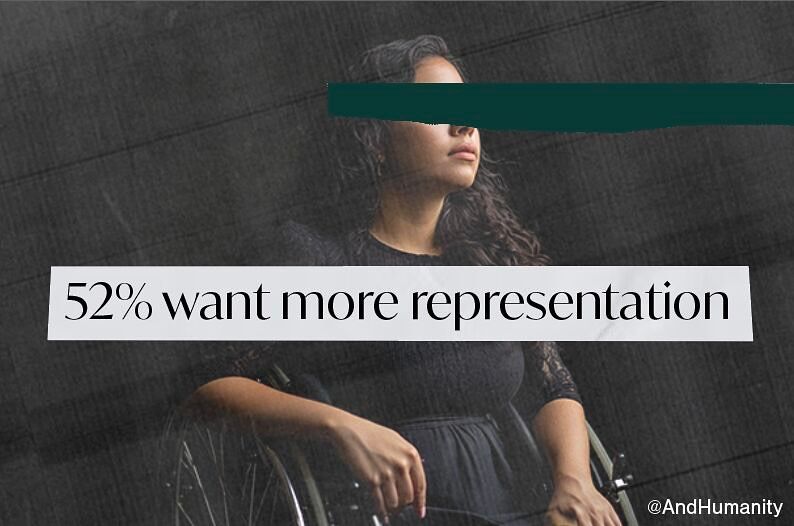An Introduction
Hey there, I’m Linda, and I’m an Accounts Intern at AndHumanity (I’ve thrown myself into the copywriting side of the team as well, but that’s beside the point). Outside of my role here, though, I’m a second-generation Vietnamese settler who lives – and was raised on – the unceded, stolen territories of the Coast Salish peoples, commonly known as Southeast Vancouver.
One thing you should know about me is that I think a lot about storytelling. I think about the stories I engage with across different genres and mediums – whether through books, video games, graphic novels, television, movies, or my friends telling me what they got up to over the weekend. I also think about how stories shape culture, and how, historically, culture-impacting stories are often told by those who have the power and means to do so.
Why does this matter to you and your organization? Well, brands are exactly the kinds of entities that have the power and means to influence and shape culture through storytelling. This means that you have an opportunity to use that cultural storytelling power meaningfully – to contribute to a culture that not only accepts but also actively welcomes the diversity of voices in our communities.
In addition to that, the process of considering and incorporating the full breadth of lived experience can lead to the development of authentic brand strategies that engage the audiences we want to reach.
So, how might we go about leveraging this power for the good of society and brand? First, let’s dive into my story.

Growing Up in an Immigrant-Majority Neighbourhood
You might have heard that we’re all products of the society and culture we’re raised in. Our lived experience influences the lens through which we see and understand the world. In my case, I grew up (and still live) in an immigrant-majority neighbourhood. My elementary school is a five-minute walk away. My high school is just on the next block. Growing up, the community I saw around me was comprised of immigrants from South Asian, East Asian, and Southeast Asian countries. I mentioned in my introduction that I’m a second-generation settler – so are all of my childhood friends!
So, in my formative years, my world started and ended, for the most part, at the boundaries of my neighbourhood. But this didn’t mean the world outside of my neighbourhood stopped existing – nor did it mean that larger society couldn’t encroach and influence our worldviews. After all, television still existed. Billboards still existed. The news channels our parents watched daily still existed. Mainstream media still had the ability to penetrate the communities we know and leave its mark on the way we see other people. And it often does so through stories.
But what does it look like when brands and media don’t use their storytelling power to be inclusive? Despite having been raised in an immigrant-majority environment, I – and many of my neighbourhood friends – still accepted White as the default. Heterosexuality as the default. Cisgender as the default. It was all we saw in the media we consumed, in the stories we read and watched. People like me weren’t the storytellers. These storytellers were the folks behind these creatives, commercials, billboards, news articles. And these storytellers were typically White, heterosexual, and cisgender.
I experienced that White as the default, as I’d seen in marketing and media for so long, was actually a story about who our society and institutions privilege.
Honestly, I saw nothing wrong with this until I transitioned to a post-secondary environment. Not to say at all that growth can only come with higher education, but that, as a result, my world broadened to include folks outside of my cozy, little neighbourhood. Suddenly, there were a whole lot more White folks than I was used to seeing on a regular basis. The UBC student body does have a fairly significant People of Colour (POC) population, but when you’re used to 90%, 50% in comparison can feel like a drastic change.
Suddenly, I felt the difference in my existence. I experienced that White as the default, as I’d seen in marketing and media for so long, was actually a story about who our society and institutions privilege. I even dealt with the “perpetual foreigner” stereotype for the first time (“Where are you from?” “From here.” “No, where are you really from?”).
For the first time, I was acutely aware of the colour of my skin and the different parts of my identity that didn’t quite mesh with the environment I found myself in.

Growing Up in Online Spaces
Wait, what? Why are we talking about online spaces now, you might ask. But sharing my lived experience means that I also have to talk about the online spaces I grew up in, simply due to the fundamental role they played in broadening my worldview – arguably more significant than even my transition to post-secondary.
Social media platforms have been a thing since I was a kid, but online communities – full of people outside of my social circle – came into my life in 2010 when I joined Tumblr on the behest of a friend. There, I found countless folks who had the same interests I did – which was super exciting for Grade 10 Linda, who was going through an intense Harry Potter phase at the time.
Jumping into online spaces granted me the ability to become part of these communities, full of the diversity of lived experiences that people have to offer.
The nature of digital spaces is such that the communities you find there are made up of people from different parts of the world. You might not know where Tumblr user JiminFan1013 is from, for example, but you tend to assume they’re not from your little neighbourhood (unless they are – weird coincidences have been known to happen).
You know this because sometimes, these audiences use these social media platforms to tell their own stories, their own lives outside of these common interests. At least, that’s been my experience. As I jumped from niche interest to niche interest, from social media platform to social media platform, I exposed myself to more and more lived experiences from friends (because I considered them friends) in other parts of the world.
One day I might be chatting with a friend in Portugal about her transition into university. Other days, I might be listening in on a heated discussion between a nonbinary friend in India and a Black lesbian friend in Texas on the usage of “queer” as an umbrella term. In either case, I’m learning about lived experiences through their storytelling.
Jumping into online spaces granted me the ability to become part of these communities, full of the diversity of lived experiences that people have to offer. My online friends, acquaintances, and even complete strangers provided me with more lenses through which I could understand my own lived experience as a child of refugee immigrants. I began to look at the broader white supremacist, capitalist, patriarchal, cisheteronormative system under which we all live, and how that has impacted – and continues to impact – the way I understand the world around me.
I understood that the stories being told by brands and media really only reflect the realities of those who have the most privilege. And I understood that these stories weren’t anything like the stories I was hearing in these diverse online communities. (There is a lot to say about the intersection between online communities and marginalized identities, but that’s a whole other discussion).
Why This Matters To Your Inclusive Marketing Efforts

Now, how is my personal journey relevant to your inclusive marketing efforts?
Currently, I’m finishing up a Marketing Communications Diploma program at BCIT. This past semester, one of my instructors shared a Harvard Business Review article by Sara Wilson about this allegedly “new” concept called digital campfires. In the article, Wilson defines digital campfires as digital spaces that “offer a more intimate oasis where smaller groups of people are excited to gather around shared interests.” Sound familiar?
The article goes on to describe experiences I’ve been intimately familiar with since my first foray into Tumblr in 2010. And even further back, these intimate online communities have existed for decades. Some of my online friends, who have been in these spaces for much longer than I have, have shared with me some stories about how Harry Potter fans (book fans, not movie fans) gathered in online forums hosted on Yahoo! GeoCities in the early 2000s. Were those forums not the very definition of an “intimate oasis” for groups of people with shared interests to gather?
Brands might have only discovered these intimate, online communities in recent years, but that doesn’t mean they haven’t always existed. Framing these communities as “new” and “trending” does a disservice to the diversity of lived experiences and stories that have been told for decades. Instead, brands looking to be truly and authentically inclusive should identify these well-established communities and provide both the platform and the means through which these groups can authentically speak to their own lived experiences and share their own stories.
Final Thoughts
Something I’ve learned during my internship at AndHumanity is that authentically inclusive marketing requires that we be intentional about who we include and exclude. If the default has historically been White, challenge that by including the voices of folks with lived experience like my own. At the same time, become familiar with the different types of privileges and exclude those voices to make room for the specific equity-deserving groups you want to engage with. In any case, brands have an opportunity to engage with their audiences and meet people where they are – by taking the time and effort to really know them and their stories.
How would 10-year-old Linda, growing up in her cozy little neighbourhood, have felt if the billboards and commercials she saw reflected the world she knew – where White wasn’t the default?
There are a lot of articles and essays out there about the power of storytelling. Storytelling as a way of engaging people. Storytelling as a force for change. In that sense, brands wield a lot of cultural storytelling power. After all, what is marketing if not a collection of stories aiming to effect change (even if that change involves simply getting a person to switch clothing brands)?
Inclusive marketing, then, creates a space for organizations and brands to share the power of storytelling with the equity-deserving communities we want to reach and engage with. The same ones who many brands have, unfortunately, been ignoring for so long. How would 10-year-old Linda, growing up in her cozy little neighbourhood, have felt if the billboards and commercials she saw reflected the world she knew – where White wasn’t the default? How many more possibilities for her future would have opened up in her imagination if she’d been able to engage with media that featured folks who looked and behaved like her, who had backgrounds and experiences similar to her own?
The good news is it’s not too late to do things right. The communities are already there. The stories are already there. You just need to look, listen, and authentically support. AndHumanity’s Equity-Deserving Allies Network is even founded on the core principle of “nothing about us without us,” which actively seeks to ensure that authentic stories are told about these communities by members of those communities. You can make a similar impact by incorporating these 3 main takeaways into your brand strategies:
- Brands need to go beyond the default and acknowledge that equity-deserving groups exist.
- Brands need to take the time to understand and learn about lived experience.
- Brands need to create space for equity-deserving groups to tell their own stories.
Ultimately, by taking these considerations to heart and incorporating them into your core principles – on both an organizational and personal level – you can develop inclusive brand strategies that are as authentic as they are effective.









